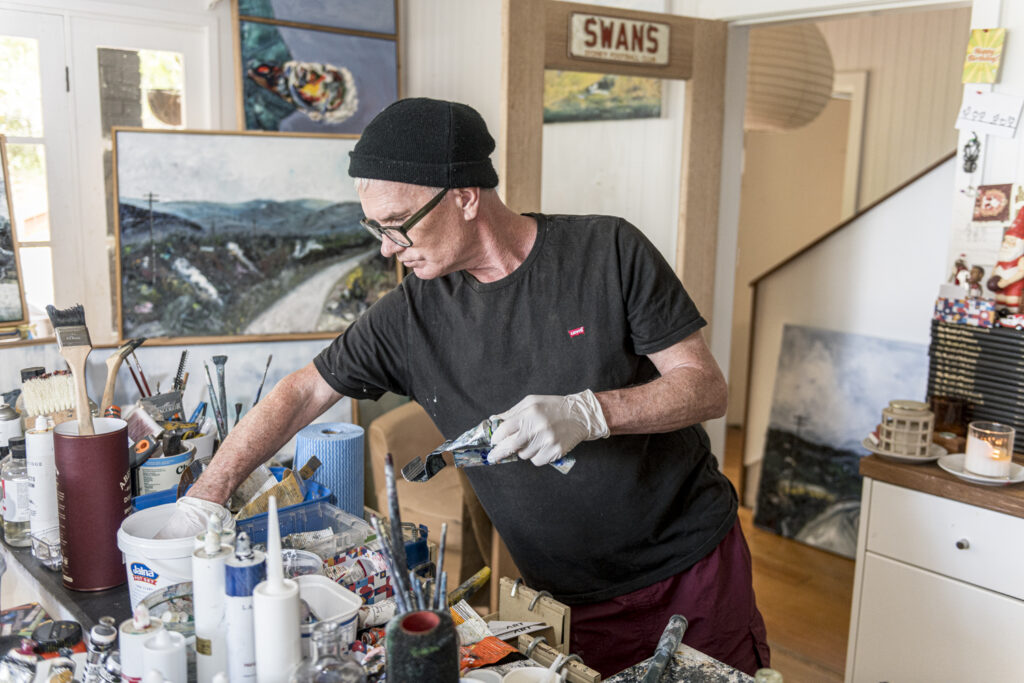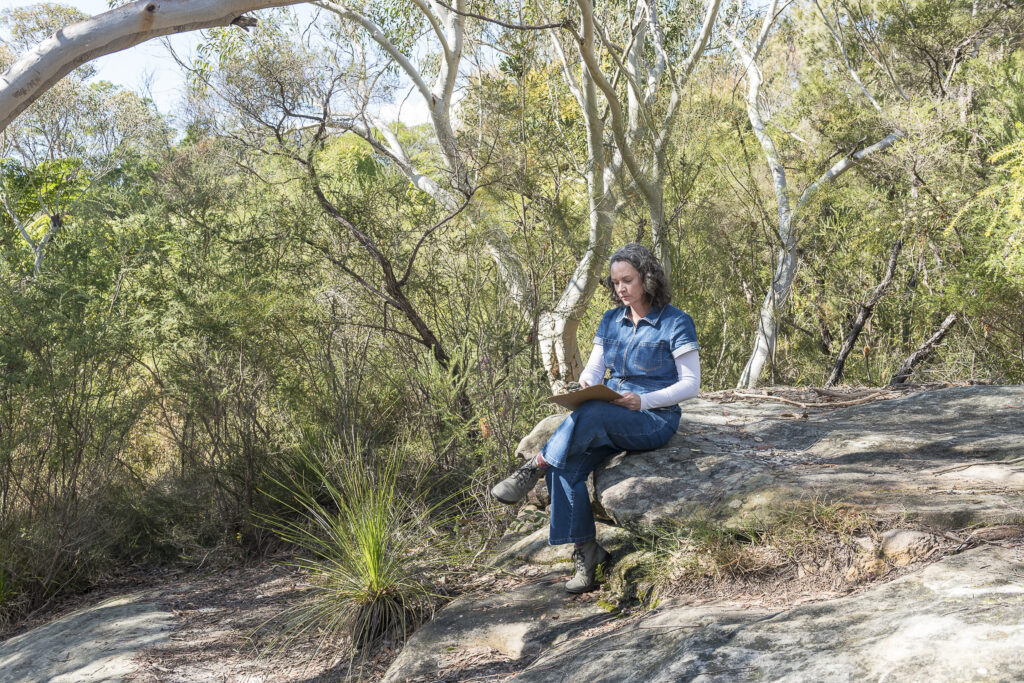The Truffle Couple
Words: Michael Sharp.
Photography: Ashley Mackevicius.
It all started with a casual conversation over a glass of wine after work.
“I’m a girl of provenance,” Anna says confidently as she cooks bacon and egg rolls with chipotle sauce over a small fire overlooking a dam. “I like good food and I value where things are meant to be grown. I told Andy that my dream was to go to Italy and spend a season with an old truffle hunter, just tagging along and learning.
“But Andy said: ‘Why go to Italy, why don’t we start our own truffle farm?’
“Being the provenance girl, I thought that was a bit blasphemous. But I’ve changed my mind about that now. We need to be a bit more diverse in how we think about food and where we grow it.”
About two months after that fateful conversation a decade ago, Anna and Andy started looking for properties that would suit a trufferie. They were determined from the beginning that their farm would not use chemicals or pesticides and they found a property for sale in Canyonleigh that had been part of a biodynamic cattle farm.
“We learned that the previous owner, who was still living on one of the other parts of the old cattle station, had looked into whether a trufferie would be suitable for her land,” Andy says. “She had even had the soil tested. It’s as if the stars had aligned.”
And so they bought the 117 acre property, which has about 30 acres of arable land and lies at the end of a narrow road lined with horse and cattle properties at the north-western tip of Canyonleigh. It is perched on a ridge above the Wollondilly River with stunning 360 degree views.
Both Anna and Andy were working full time in corporate roles in Sydney when they bought the property and they would drive down each weekend, sleeping in a tent and using an outdoor toilet and shower.
“After a while we built a small cabin – and we shared it with 400 saplings.”
They had sourced the saplings from a reputable Victorian supplier because they knew it was critical to obtain trees that had been successfully inoculated. They began planting them by hand in 2016 as consultants and contractors told them it would be impossible to manage their trufferie without using chemicals or pesticides – particularly to keep the weeds under control.
“We always had aspirations to do it organically and we thought it would be a real point of difference,” Andy says. “There have been a number of times when we really questioned whether we could do it. But we stuck to our principles and we’re really glad we did.”
After a couple of years they realised they didn’t want to return to their Sydney offices on Mondays.
“That’s when it dawned on us it was no longer this hobby project but a business we could take seriously. So in 2018 we decided to sell our house in Sydney.”


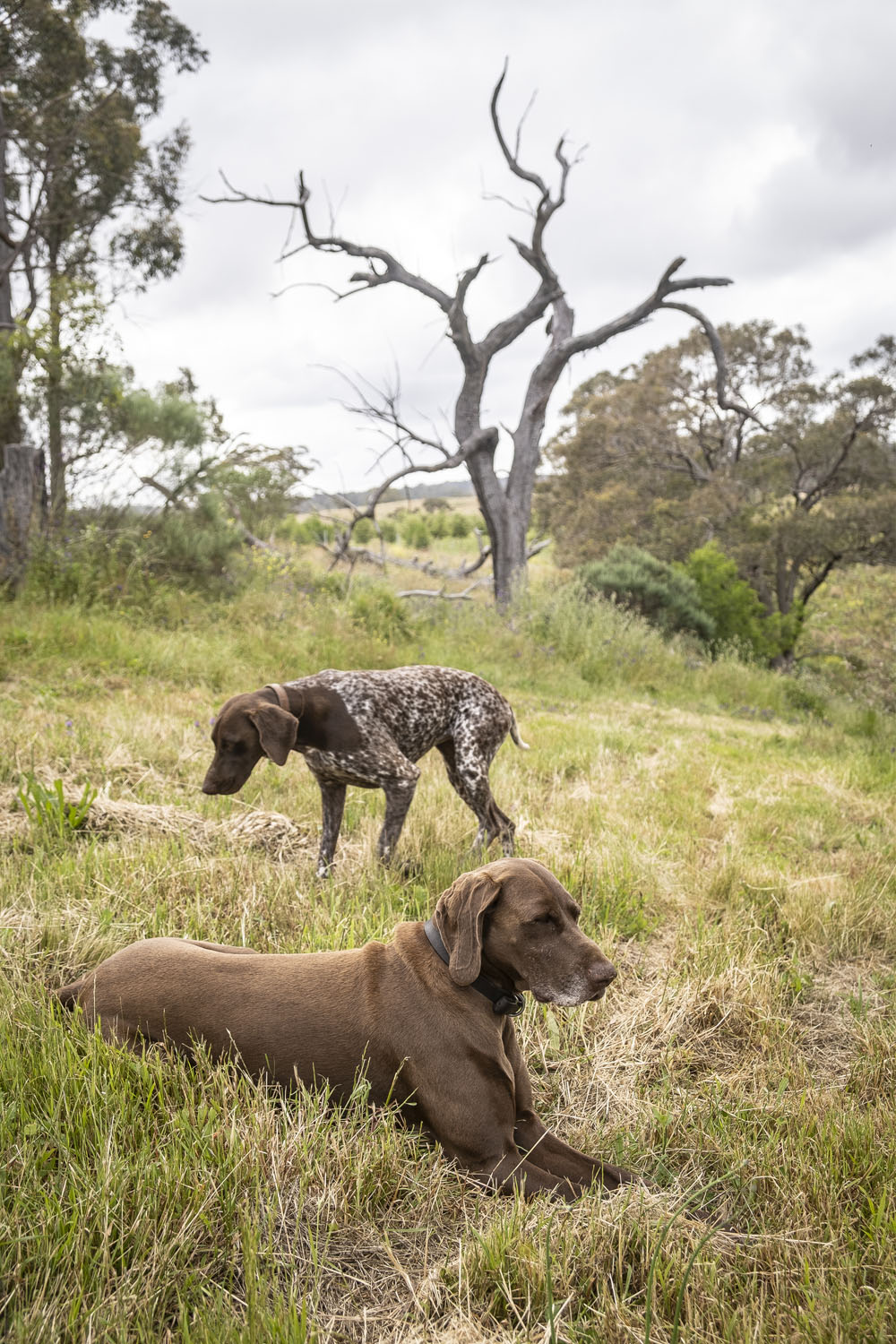
The next few years were extremely challenging, first because of the drought, Anna would drive down to Canyonleigh and back mid-week, a four hour round trip early in the morning or late at night, to water the trees and hope they survived. They did. And then came the bushfires.
“The fires came so close to our property that we could view them on our north ridge line,” Andy recalls.
Their trufferie now consisted of 600 trees and remarkably they all survived both the drought and then the bushfires of 2019.
In July 2020, four years after they had planted their first trees, Anna received a call from a Victorian truffle consultant who had become a friend.
“He’d been extremely supportive and he called to ask how we were going and if we’d looked for any truffles yet. I said it was too early and we wouldn’t have anything for another year. He told me to just go out and see what’s there. So, reluctantly, I started looking and when I got to the fourth tree the smell just hit me, straight in the face. I thought: ‘No, that can’t be a truffle.’ And then I started to dig – and there it was, our first truffle.
“I ran up to the barn with tears streaming down my face and shouted: “Andy, we’ve got [expletive] truffles!”
Andy was on a work call and everyone on it could hear Anna’s joyful screams and see her jumping around in the background. It’s a very COVID story.
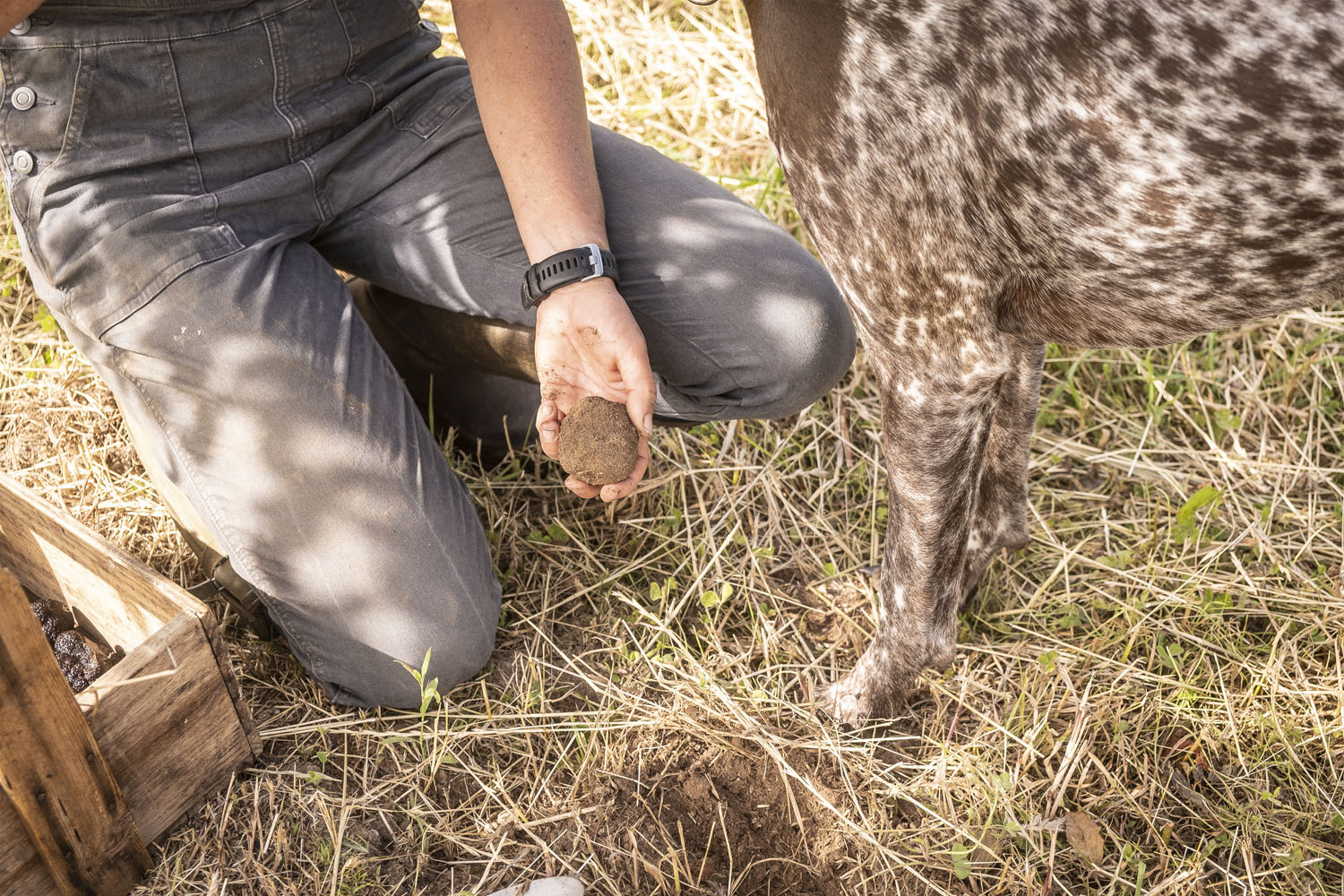
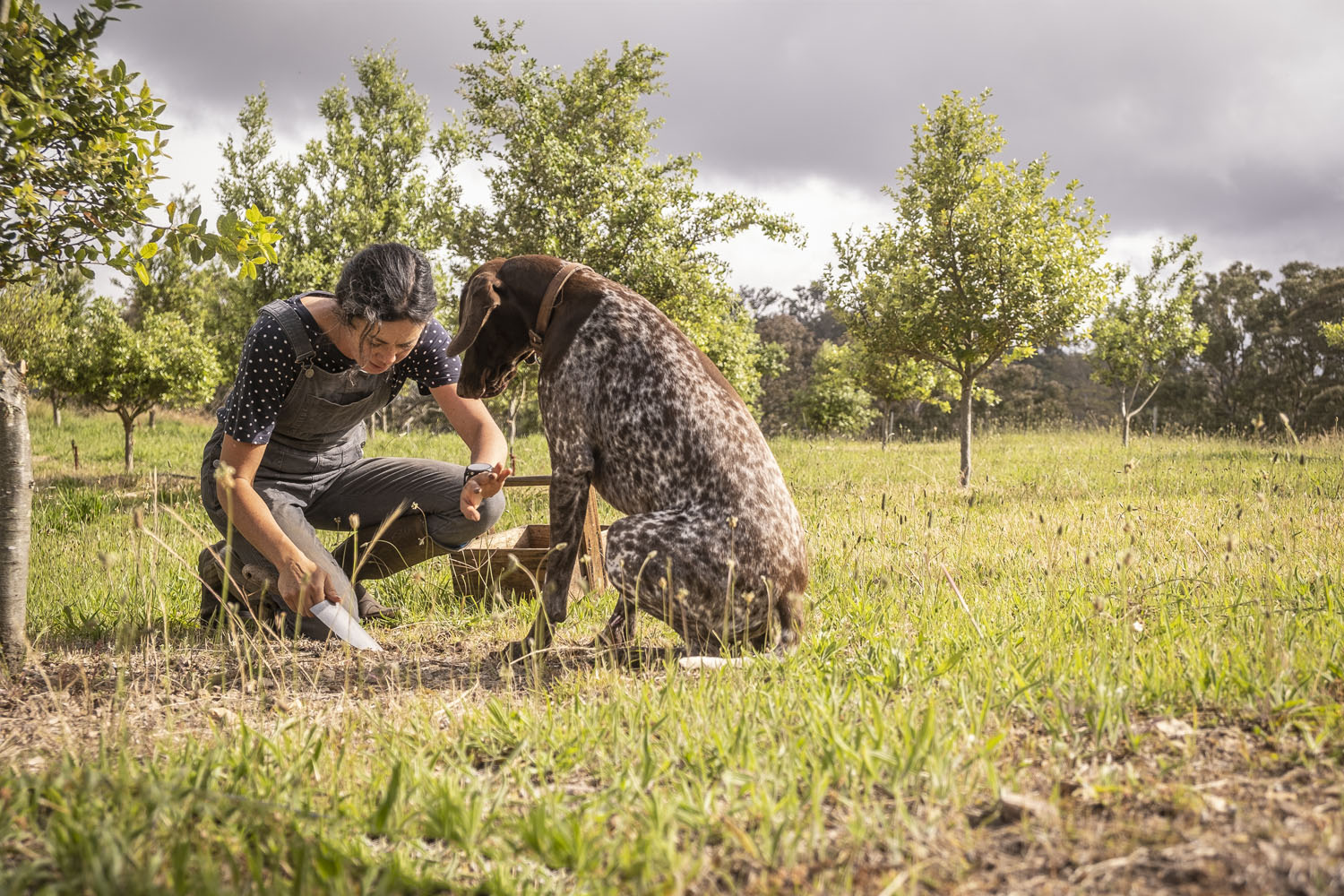

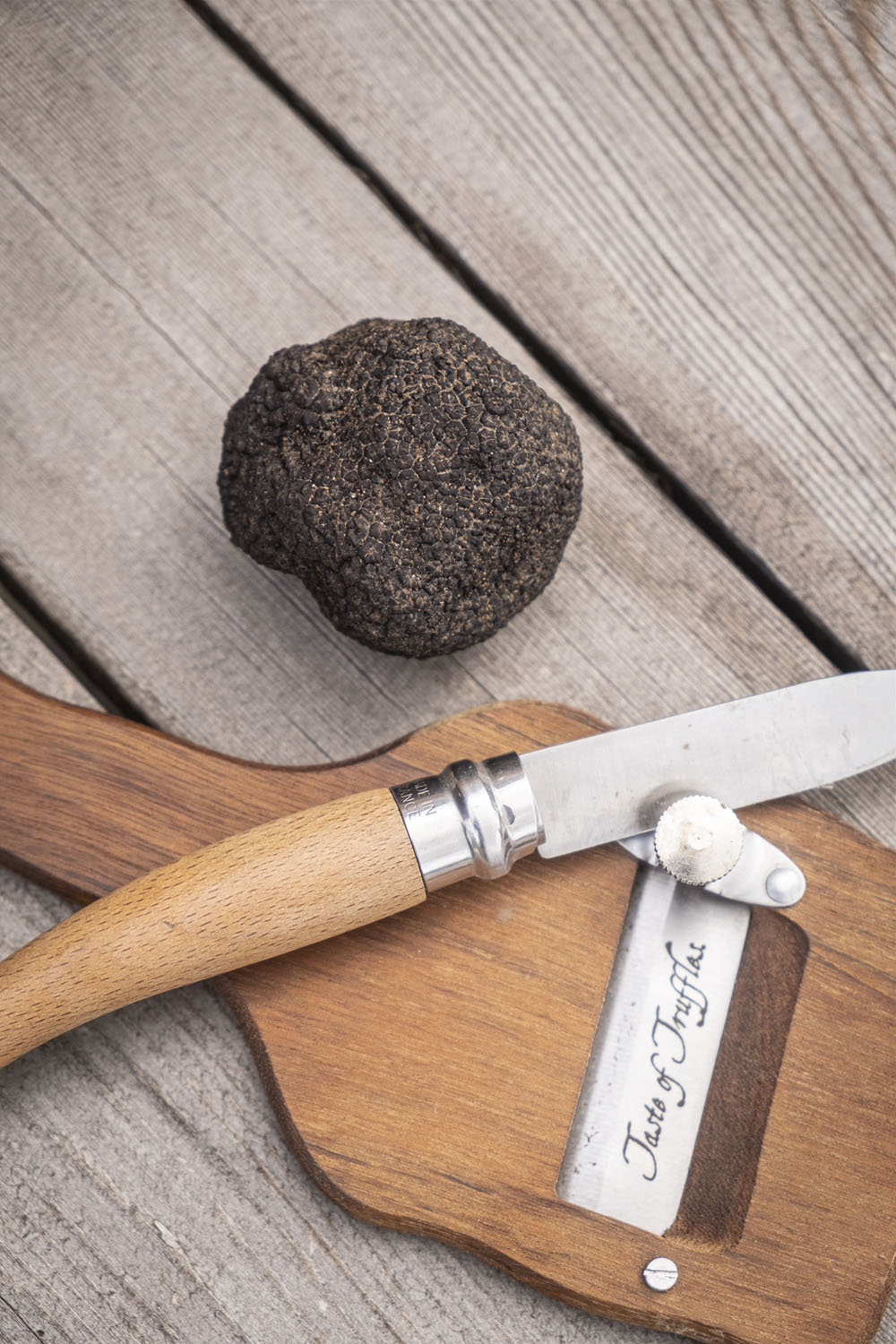
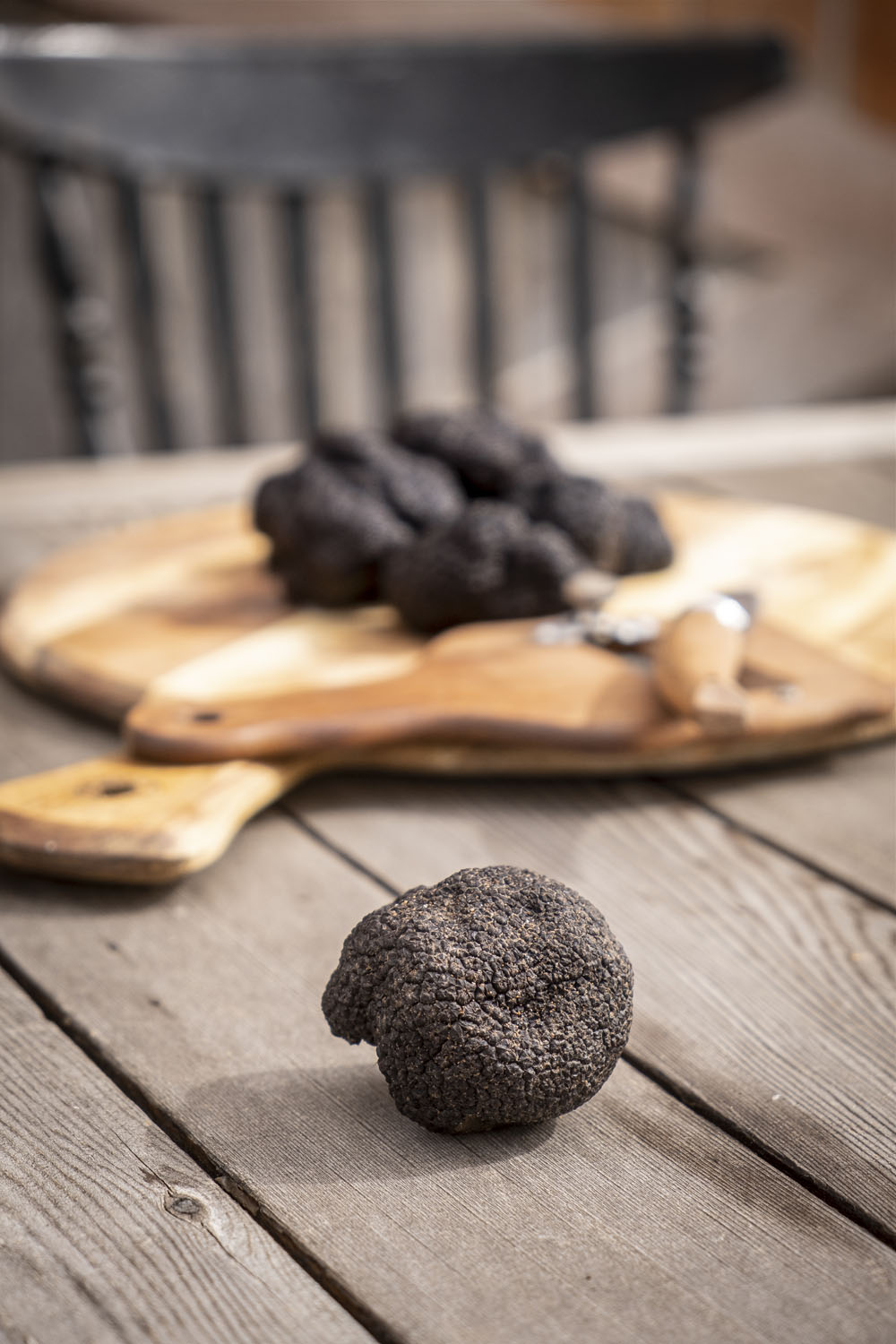
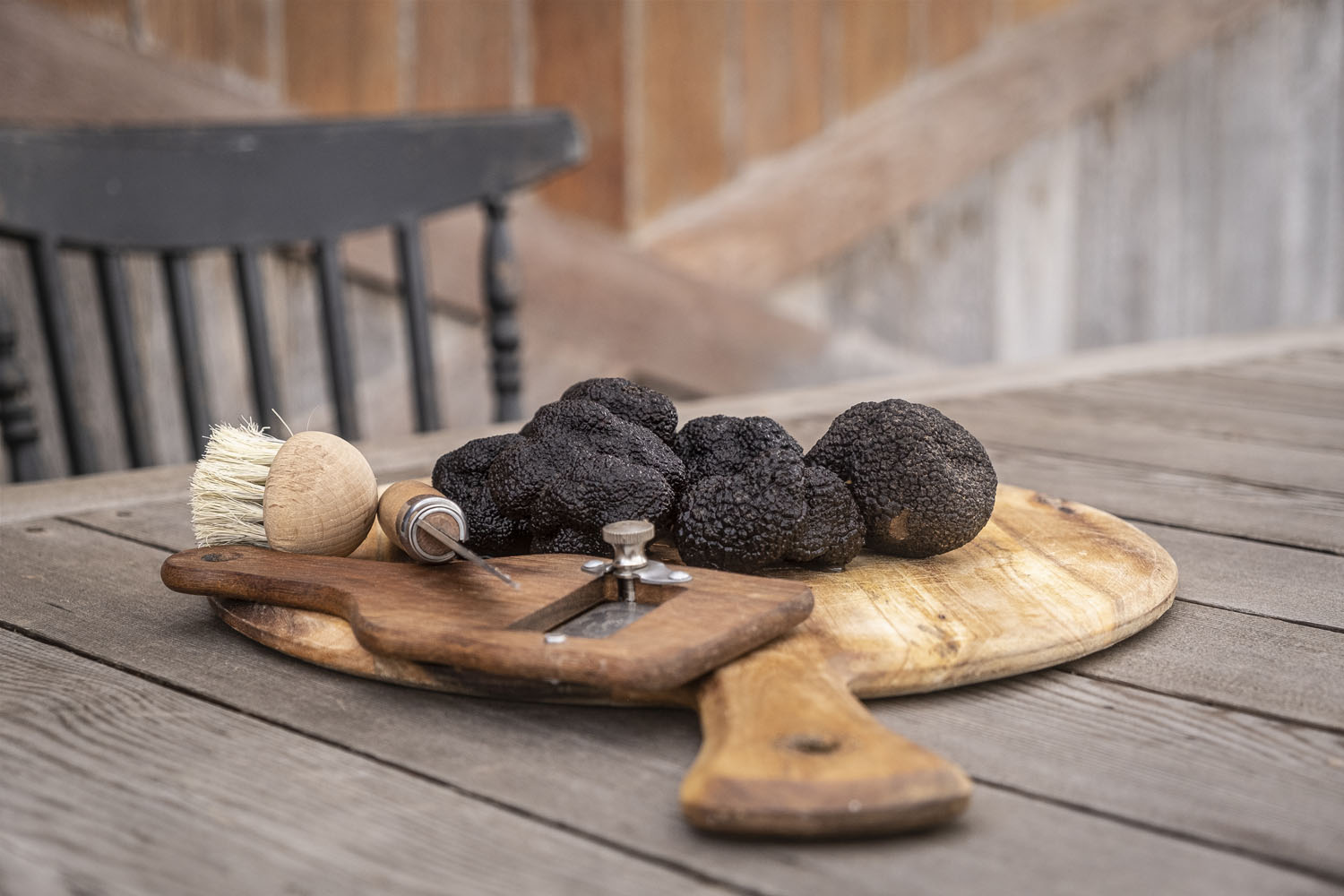
This first harvest didn’t produce enough truffles to sell, so they gave them as gifts to (very fortunate) friends.
“You don’t have to be great in the kitchen, an amazing chef, to use truffles,” Andy stresses. “You can just shave them on to simple meals – pasta, eggs, certain meats – and it makes a huge difference. You can put them on a toasted cheese sandwich and it tastes amazing.”
In 2021 they produced about 30 kilograms of truffles and in 2022 they produced slightly more. They sell them to a few local restaurants as well as clients in Sydney and Victoria.
Today the Truffle Barn boasts 520 French Oaks, which host Perigord French black truffles, and 88 Italian Stone Pines, which host white truffles (bianchetto) and will eventually also produce pine nuts.
Anna and Andy harvest their truffles with the help of their two German Shorthaired Pointers, Cyril and Nutmeg.
“They are not ideal truffle dogs, because they are hunting dogs and get distracted,” Anna says, “but they are robust farm dogs and perform very well. They are trained to locate the truffle and then mark the soil. Some are trained to just sit, while I find it’s easier if they mark with their paws. They get a treat if they get it right.”
Anna and Andy have maintained their commitment to be chemical and pesticide free, using biodegradable weed mats and only adding lime to increase the soil PH. Their broader sustainability goals are achieved by the farm operating entirely on solar power, with battery storage, while all the water used is rainwater captured and stored in water tanks and dams. They have also improved the efficiency of water runoff into their dams.
Anna studied permaculture after she resigned from her corporate role, and this has significantly informed their management of The Truffle Barn.
“It has been brilliant. It’s really changed our life and how we live down here.”
Anna and Andy are still living in a cabin as they build the house they hope will be completed next year. Their new home, which sits beautifully on a hill above the Wollondilly River, reflects their desire to minimise their carbon footprint, both during construction and for the life of the building. No plasterboard or paint has been used. The floor is concrete and the main materials are timber and hemp.
“Hemp is not commonly used as a building product in Australia, which is a shame because its insulation and fire rated properties are excellent.”
They have a large kitchen garden, which provides vegetables in all seasons, and there is a cellar under the house for storage of any excess produce. This year, they have produced their first commercial crop of garlic.
Anna and Andy love their new life and have no doubt it has been the right decision to leave Sydney and pursue their passion for truffles.
They say it’s been important to become involved in the local community. They participate in several local organisations, including for agribusiness owners, and they have both become voluntary ambulance officers. This is important in Canyonleigh, where ambulance services have a long journey when they are called following a car or motorbike accident, a fall from a horse or even a plane crash at the nearby airfield.
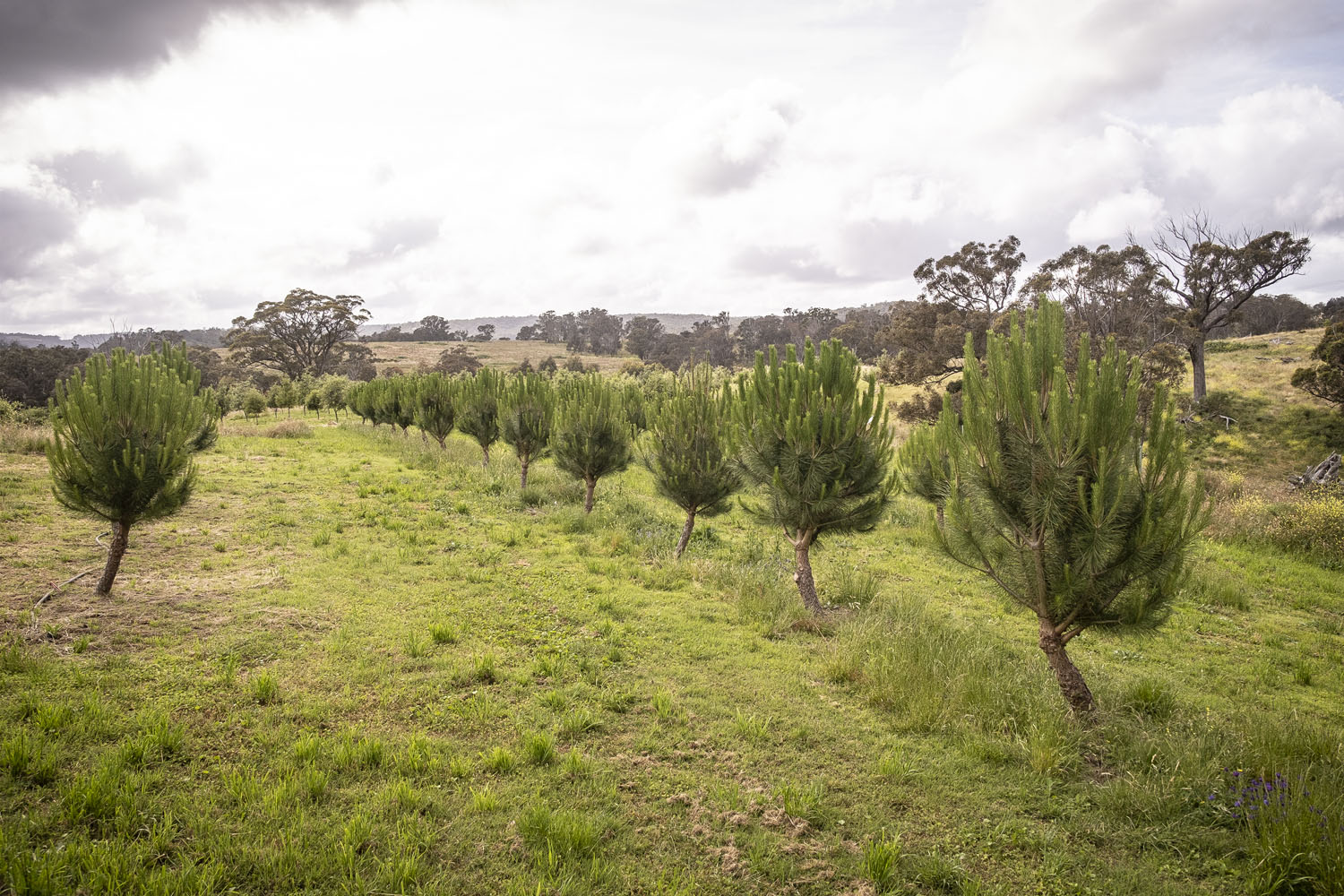


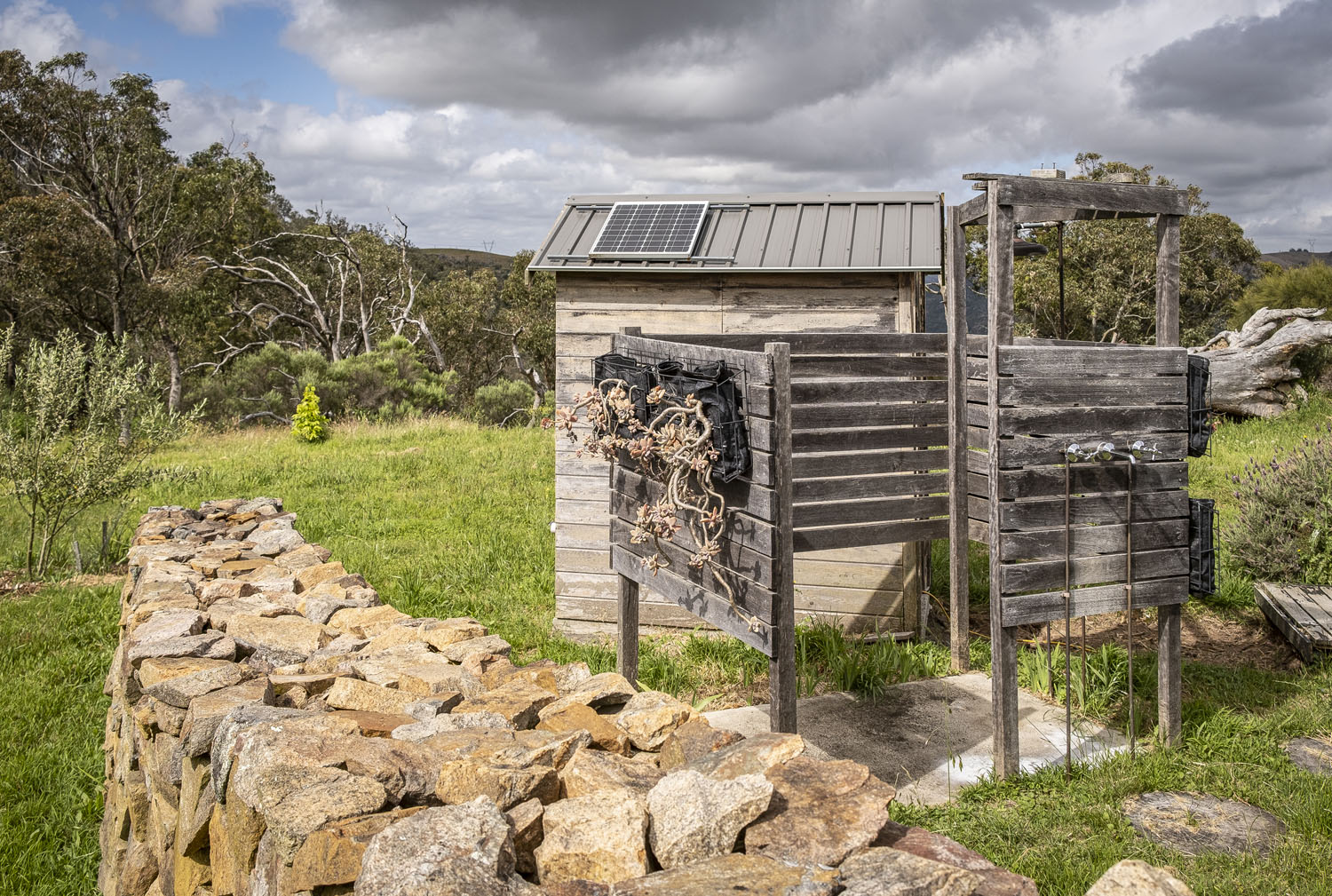
Looking back, Andy says their naivety was a blessing.
“If we knew up front how much hard work was involved and how challenging it would be, we probably wouldn’t have started,” he admits.
Anna adds that all the stonework around the property was built from stones that they picked or dug up by hand from the trufferie plot and then moved with a wheelbarrow. They have calculated there are about 160 tonnes of rock in their Gabion cages.
“There’s no way you would embark on that process if you knew at the start what you would be doing,” she laughs.
The Truffle Barn produces fresh truffles for three months a year, from June to mid-September, and the rest of the year is spent pruning and maintaining the trufferie. This is vital to the success of the next season. While they have begun to think about diversification in the future, Andy notes they have learned that an agribusiness can become all-consuming.
“One of the reasons we made the tree change was to have more connection to the land and to each other, to enjoy more quality time,” he says. “The trap you can fall into with an agribusiness like this is that you can work seven days a week – more than you did in the corporate world.”
“We know we are producing really good truffles now and that is a really good feeling,” Anna adds. “We are proud of what we have achieved. I think we need to enjoy that for another couple of years before we start to branch out. There is a danger that you don’t pause for long enough and enjoy what you’ve done.”
For the moment then, Anna and Andy are stopping to smell the truffles.
For more information visit thetrufflebarn.com

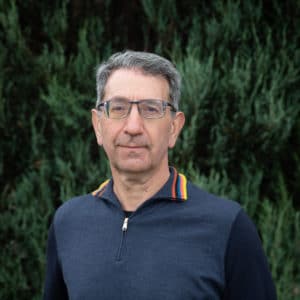
Michael Sharp
Michael is the Gallery Manager at Michael Reid Southern Highlands. He has previously worked as a lawyer, journalist and senior practitioner in Australian corporate affairs.
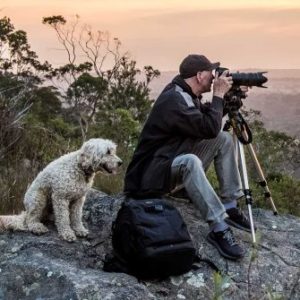
Ashley Mackevicius
Ashley discovered photography at the age of 15, which proved to be a lifeline for the academically challenged son of Lithuanian migrants. He has had a long and successful career and lives in The Southern Highlands.
- xxi Pecora Dairy June 2024
- XXIX David King December 2025
- XXVIII Nicola Woodcock August 2025
- xxvii Marlie Draught Horse Stud May 2025
- xxvi India Mark February 2025
- xxv Mussett Holdings December 2024
- xxiv Louise Frith October 2024
- xxiii Dirty Jane August 2024
- xxii Melanie Waugh July 2024
- xx Emily Gordon May 2024
- xix Steve Hogwood March 2024
- xviii Julz Beresford February 2024
- xvii Snake Creek Cattle Company November 2023
- xvi Ben Waters September 2023
- xv The Reid Brothers August 2023
- xiv Elizabeth Beaumont July 2023
- xiii The Charlotte Project June 2023
- xii Buddhism in Bundanoon May 2023
- xi Honey Thief April 2023
- x David Ball February 2023
- ix Kate Vella January 2023
- viii The Truffle Couple December 2022
- vii Wombat Man November 2022
- vi Storybook Alpacas September 2022
- v Tamara Dean August 2022
- iv John Sharp July 2022
- iii Amanda Mackevicius June 2022
- ii Denise Faulkner May 2022
- i Joadja Distillery March 2022
















